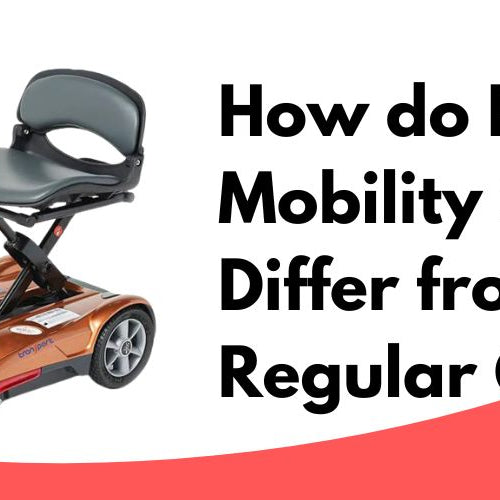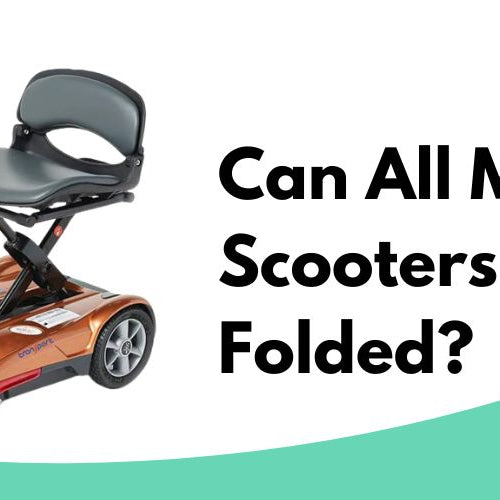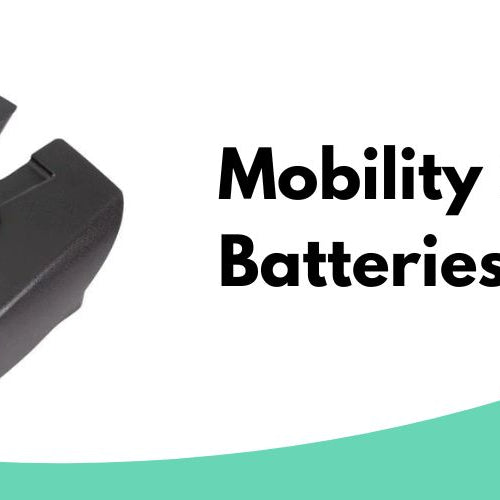Rollators and walkers are essential mobility aids designed to provide support, stability, and independence to individuals facing difficulty in walking or standing due to age, injury, or other physical limitations. While both serve a similar purpose, they cater to different needs and levels of mobility. Understanding the differences between these two walking aids is crucial for making an informed decision about which one is best suited for your specific requirements.
Rollators, commonly known as rolling walkers with seats, offer a wide area of support and are easy to maneuver. They are equipped with 3 or 4 wheels and have brakes to ensure user control and safety. Rollators often come with storage compartments, a seat, or a padded backrest for added convenience and comfort. Due to their wheeled nature, rollators do require a certain level of balance and coordination to operate safely.
Walkers, on the other hand, are typically more basic devices that consist of a lightweight frame with four legs. They are designed to be picked up and moved forward before each step, providing support and stability for the user. Generally, walkers are more suitable for individuals who need substantial support for their balance and are meant for those with more limited mobility. In contrast to rollators, walkers don't have wheels or additional features like seats or storage. When choosing between a rollator and a walker, it's essential to consider factors such as the user's specific mobility needs, level of activity, and desired additional features.
A wide collection of the best rollators/walkers can be found at Mobility Nest.
Understanding Rollators and Walkers
Defining Rollators
Rollators are versatile mobility aids designed to assist individuals with mobility challenges. They typically feature a sturdy frame with four wheels, which makes them easier to maneuver compared to walkers. Rollators also come with a built-in seat and a backrest, allowing users to take breaks and sit down whenever needed. These features make rollators a popular choice for those who need extra support while walking but can still move at a relatively faster pace.
Rollators are available in various designs and sizes to accommodate different needs and preferences. Some additional features of rollators may include:
- Adjustable handle height
- Locking brakes for safety
- Padded seats and backrests for comfort
- Foldable frame for easy storage and transport
- Storage pouches or baskets to carry personal belongings
Defining Walkers
Walkers, on the other hand, are simpler mobility aids that provide essential support for those with mobility challenges. Unlike rollators, walkers have a basic frame with four legs, typically without wheels, or with two small wheels at the front and two leg glides at the back. Users lift a walker and place it in front of them to move forward, making this a slower-paced mobility aid compared to rollators.
Walkers are a suitable option for those who require added stability while walking or standing, but do not need the additional features provided by rollators. Some key aspects of walkers include:
- Lightweight frame for easy lifting and maneuvering
- Rubber tips or small wheels on the legs for better grip
- Height-adjustable handles to fit users' requirements
- Optional accessories such as trays, bags, or cup holders
In summary, both rollators and walkers serve as essential mobility aids for individuals facing challenges with movement. Rollators offer enhanced versatility with added features such as seats, backrests, and four wheels, making them suitable for faster-paced walking. Walkers, with their simpler design and focus on stability, cater to those who need a slower, more supportive walking aid. When choosing between these two mobility devices, it is crucial to consider the user's needs, preferences, and desired walking pace. Consulting a medical professional is always advisable to ensure the appropriate choice is made.
Comparing the Key Features
Stability and Support
Rollators and walkers both provide mobility assistance to individuals who struggle with walking or maintaining their balance. Walkers consist of a simple frame with four legs, offering steady support to users while they walk. Rollators come with a frame similar to walkers but feature wheels and a built-in seat, with a backrest for additional stability and support. If someone needs a mobility aid but can operate with less support, they might choose a rollator.
Maneuverability
In terms of maneuverability, rollators have an advantage over walkers. The wheels on rollators make them easy to move across various surfaces, including indoor flooring and outdoor terrains. However, users of rollators should note that it requires more balance and coordination for safe operation. In contrast, walkers without wheels rely on a user's strength to lift and move, resulting in greater stability but reduced maneuvering capabilities. It is essential to consider one's physical ability when choosing between a rollator and a walker.
Portability and Storage
Another aspect to consider is the portability and storage of these mobility aids. Rollators, especially those like the EZ Fold-N-Go, are typically lightweight and collapsible, making them easy to transport and store in a vehicle. The EZ Fold-N-Go Rollator, for example, weighs only 14.5 lbs and is made of high-grade aircraft aluminum, allowing it to fold down to a compact size. On the other hand, walkers are also lightweight and foldable, with some models like the hemi walker designed for one-handed use, making them suitable for elderly individuals with partial or full paralysis on one side of their body.
Overall, comparing the key features of rollators and walkers can help users make informed decisions about which mobility aid best suits their needs. Factors such as stability, maneuverability, and portability should be considered when choosing between these two types of devices.
Selecting the Right Device for You
When it comes to choosing between rollators and walkers, it's important to consider your individual mobility needs and lifestyle factors. In this section, we'll discuss how you can assess your mobility needs and consider lifestyle factors in order to select the right device for you.
Assessing Your Mobility Needs
To determine whether a rollator or walker would be more beneficial for your situation, you'll need to assess your mobility needs. Take the following factors into account:
-
Balance and coordination: Rollators, which are rolling walkers with seats, offer a wider area of support and are easy to maneuver, requiring some balance and coordination to safely operate. In contrast, walkers with four legs (or sometimes two legs and two small wheels) offer more stability but less mobility.
-
Walking distance: A rollator is designed to provide support and mobility over longer distances, whereas a walker with legs may be better suited for those who need more support and move at a slower pace.
-
Support for one-handed use: Hemi walkers, which look like folding walkers but are held in one hand like a cane, are great options for those who have partial or full paralysis on one side of their body and need additional support.
Considering Lifestyle Factors
In addition to your mobility needs, it's important to take the following lifestyle factors into consideration:
-
Indoor vs. outdoor use: Evaluate whether you'll be using the walking aid primarily indoors, outdoors, or both. Rollators typically function well in both settings, due to their durable and lightweight design. However, walkers with legs may be more appropriate for indoor use, as they offer greater stability.
-
Transportability: If you travel frequently or anticipate needing to transport your walking aid often, look for models that are lightweight and easily foldable. For example, the EZ Fold-N-Go Rollator is made of high-grade aircraft aluminum, weighs 14.5 lbs., and folds three times smaller than the average rollator, making it ideal for transportation.
-
Adjustability: Ensure that the walking aid you choose can be adjusted to fit your height and accommodate your wrist level for optimal comfort and support.
By evaluating your mobility needs and lifestyle factors, you'll be able to make a more informed decision about whether a rollator or walker would be the best fit for you. Remember to consult with your healthcare provider or a physiotherapist for personalized guidance on selecting the right walking aid.
Additional Accessories and Customization Options
Rollator Accessories
Rollators provide numerous benefits for users, particularly when enhanced with some useful accessories. Utilizing these additions can make using rollators easier and more comfortable. A few common accessories include:
-
Pouches and bags: To help carry essential items, adding a storage bag or pouch can be very practical.
-
Trays or cup holders: These offer convenience for carrying drinks and small items hands-free.
-
Cane holders: An attached cane holder allows users to keep their cane within reach at all times.
-
Backrests: For added comfort and support, a backrest can be installed on the rollator for users who need to sit and rest frequently.
Walker Accessories
Walkers also offer a range of accessory options that can improve safety and comfort levels for users. Some popular walker attachments are:
-
Glide caps: These caps can be added to the bottom of a walker's legs, allowing it to move smoothly across surfaces.
-
Wheels: Installing wheels on the front legs of a walker adds more versatility and ease of use in navigating various terrains.
-
Platform attachments: A platform attachment can be added to the walker's armrest, providing additional support for users with weakness in one hand or arm.
-
Skis: By attaching skis to the back legs, users can glide their walker more smoothly on various surfaces.
Both rollators and walkers can be customized to suit an individual's needs, enhancing functionality, comfort, and independence. When considering which mobility aid is best suited for your needs, remember to keep your specific requirements, preferences, and physical abilities in mind.
Safety Tips for Rollators and Walkers Users
When deciding between a rollator and a walker, it's essential to know their differences and consider your individual needs. Here, we will discuss some safety tips for users of both mobility devices focused on proper usage and maintenance, choosing the right environment, and more.
Proper Usage and Maintenance
Rollators move on four wheels, providing support over longer distances and a faster pace. Users should be mindful of their balance, as leaning forward too much while holding a rollator can cause it to pitch.
- Ensure the brakes are working correctly and lock them when stationary
- Adjust the height of the handles appropriately for comfortable posture
- Regularly inspect the rollator for any wear and tear, and replace parts as needed
Walkers have four legs (or two legs and two small wheels) and require the user to lift and move the device, resulting in a slower pace.
- Opt for durable material to avoid wear and tear
- Ensure walker feet have suitable glide tips or rubber tips to prevent slips
- Adjust the height of the walker to maintain proper posture
Choosing the Right Environment
When using a rollator or a walker, it is important to consider the environment and the surfaces you'll be navigating.
Rollators are suitable for:
- Even and moderately uneven surfaces
- Outdoors, providing optimal support on sidewalks and grassy areas
- Indoors, with enough space in hallways and doorways
Walkers are ideal for:
- Flat surfaces, offering better stability and support
- Indoor use, particularly in tight spaces or narrow doorways
Ensuring that the environment is appropriate for your mobility aid can increase the safety and effectiveness of its usage.
In summary, knowing the differences between rollators and walkers, proper usage and maintenance, and choosing the right environment are essential while selecting and using these mobility aids safely.






Leave a comment